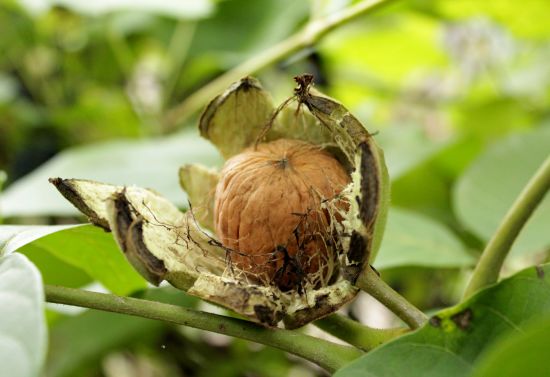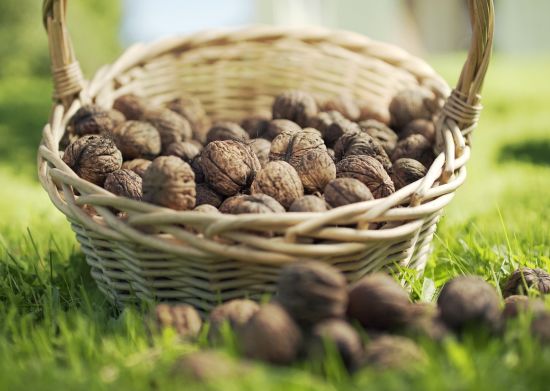
The walnuts we’re most familiar with are called English walnuts.
The variety actually started out as the Persian walnut, and was thought to have grown in the Hanging Gardens of Babylon.
There’s also a type of walnut native to the US called the California Black Walnut which is part of many native American diets. It has a bolder, earthier flavour than the English walnut. Their shells are thick, tough to crack, and may stain your hands. In New Zealand the Black Walnut is usually grown for timber only.

Space is a consideration with nut trees which can mature at around 15 metres tall and close to that in width. It’s more than most suburban backyards can accommodate. Unless you have a large property, a walnut tree is the kind of tree you would plant at your local school or park or community garden. Councils and schools are open to suggestions like this now and what a wonderful bounty to share with your community.
Planting a nut tree is similar to planting most fruit trees, except they need plenty of space. Trees planted in autumn or winter establish best.
They like a well-drained soil on a sunny site with some wind protection. Dig a hole large enough to set the tree to the level at which it grew in the nursery and a few feet wider than the tree roots when they’re spread out. Place compost in the bottom of the hole and mound it up. Place the tree on the mound, splaying the roots over the mound. Fill the hole with more compost and the soil you dug out and tamp down gently but firmly with your feet. Water your tree in well.
Newly-planted trees need to be staked and watered during dry spells in the spring and summer to encourage good establishment. Mature walnuts need regular watering too in order to produce good-sized nuts. A mulch of well-rotted compost around the base of the tree will help to retain moisture.
Once established, nuts need little care. Feed trees with a general purpose fertiliser around the drip line each spring. Diseases and insects seldom attack backyard nut trees.
The nuts develop in a pitted shell surrounded by a fibrous, leathery casing which splits when the nuts ripen in autumn. You don’t need to pick walnuts. They drop to the ground and it’s best to pick them up as they fall so they don’t deteriorate.

Nuts need to be dried before they’re ready to be shelled and eaten. Spread them out one layer thick and turn them so they dry on all sides. This usually takes two to four weeks.
And a daily handful of walnuts may stave off prostate cancer, according to recent research. Scientists at University of California at Davis have found diets rich in the nut, or its oil, slowed prostate tumour growth in mice.
Varieties that do well in our temperate climate: Meyric, Rex, Shannon and Wilson’s Wonder.
Website designed by www.thecornerstorecollective.com
Developed by Richard Hpa